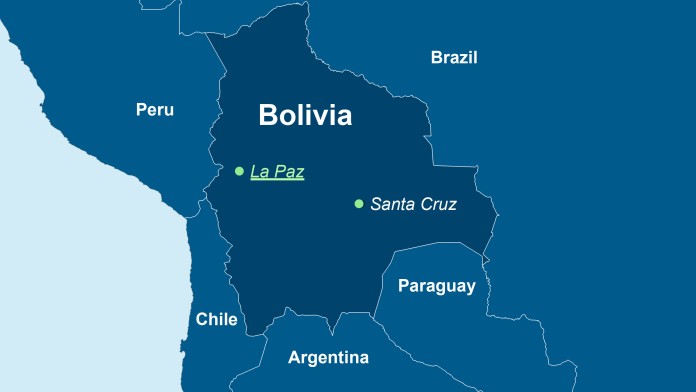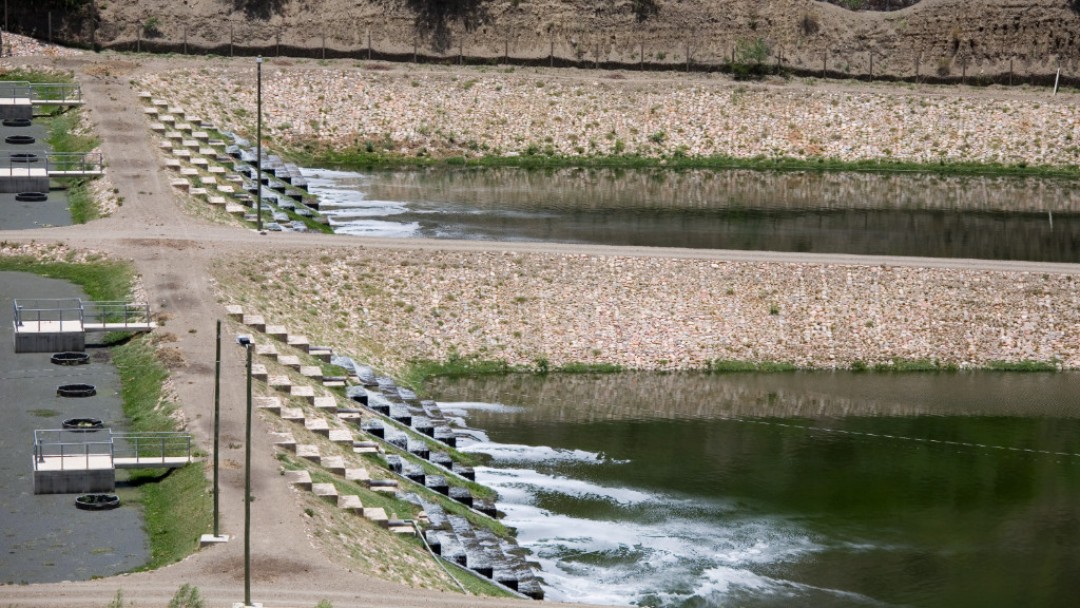
As of: 07/2025
Although the supply of drinking water and sanitation in Bolivia have improved significantly in recent years, it is still insufficient. As a result of population growth and the high influx of people migrating to large cities, access to drinking water and sanitation is low, especially in urban peripheral areas, and the quality of service poor. In addition, most of the people who live in these areas receive their water and sanitation services from small, cooperatively organised service providers who often lack management skills and resources to maintain their drinking water and wastewater systems, which is why the services are inefficient and of poor quality.
The basic services for the supply of sanitation are inadequate and reach only part of the population. In 2024, 87.9% of the population nationwide had access to drinking water and 64.4% of the population had access to basic sanitation. In both areas, the proportion is significantly higher in cities than in rural areas or in peri-urban areas. It is important to emphasise that the connection rate does not reveal anything about the quality of supply.
As there is often no sewage system, many people rely on alternative disposal methods for wastewater. Even though there are usually toilets with septic tanks shared by one or more families, if they are not properly maintained or cleaned, wastewater can seep untreated into the soil and groundwater.
As there are no alternatives, residents with no access to the sewage system often empty their grey water (dirty cleaning water or dishwater) into the street. This promotes the spread of mosquitoes and flies that can lead to outbreaks of disease, like dengue or Zika.

The “Supply of drinking water and sanitation in peri-urban areas” programme aims to improve the quality of drinking water and basic sanitation in the metropolitan area of Santa Cruz and to provide around 160,000 inhabitants of the poorer residential areas in the Santa Cruz conurbation with new wastewater connections. This is intended to improve the living and health conditions of the population and the environmental situation in the programme area. The programme also aims to improve the management and srengthen the administrative capacities of the water utilities to guarantee sustainable operations.
The central government agency for water projects (EMAGUA) is responsible for the first phase of programme implementation; the municipality of Santa Cruz will take over at the start of the second programme phase. The Ministry of Environment and Water prioritises investments in the city of Santa Cruz de la Sierra, the largest city in Bolivia: In particular, wastewater collection and adequate clarification is to be expanded.
Germany, through KfW Development Bank, has pledged a loan for this programme from budget funds amounting to EUR 85.9 million and grant financing of EUR 2.2 million. Among other things, the grant will be used to advise water utilities to increase their capacity for the sustainable operation and maintenance of the planned infrastructure.
The loans will be invested in the peri-urban areas of Santa Cruz de la Sierra. The first phase involves EUR 15.7 million, the second EUR 15.9 million, the third EUR 11.5 million, the fourth EUR 20 million and the fifth (currently still in preparation) EUR 25.0 million. The municipal administration of Santa Cruz de la Sierra, together with the water supplier SAGUAPAC, provided a financial contribution of approximately EUR 28.2 million. In addition, the municipal administration is the project-executing agency of the second to fifth phase and responsible for repayment of the debts.
The first completed project from the programme is “Construcción Alcantarillado Sanitario, Distrito 12”, which was financed with approximately EUR 13.2 million. The main goal of the project is to improve the health and living conditions of people living in poor urban districts outside the sixth city ring. A sewage system is being built there. Around 75,000 people in 12 surrounding communities in the south of Santa Cruz de la Sierra will benefit.
To identify investments for the drinking water supply and wastewater disposal in the next programme phases, KfW financed a feasibility study with grants from the Federal Ministry for Economic Cooperation and Development (BMZ). This showed that the next priority is to invest in a large-scale wastewater treatment plant and the expansion of the main collection system in the northeast of the city of Santa Cruz.
The project contributes to the achievement of these following United Nations Sustainable Development Goals:
KfW Group
KfW Development Bank
Drinking water and basic sanitation
KfW Office La Paz
Share page
To share the content of this page with your network, click on one of the icons below.
Note on data protection: When you share content, your personal data is transferred to the selected network.
Data protection
Alternatively, you can also copy the short link: https://www.kfw-entwicklungsbank.de/s/enzBx42b
Copy link Link copied